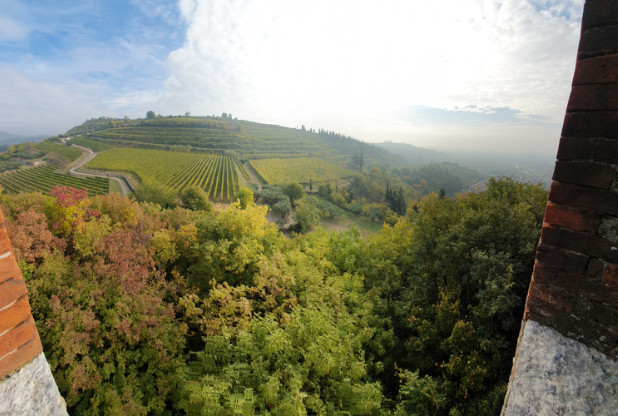
From ‘smashable’ to age-worthy, Soave plots its renaissance
Much has been made of the potential of Italian whites beyond the near ubiquitous Pinot Grigio. But few conversations have centred on an arguably more important question – namely, is there a contender to take a place with the top white wines in the world?
This was raised at a recent Soave masterclass in London (5 October), where the region’s governing Consorzio brought together UK trade for a deep dive into the qualities, complexities and terroirs of the region, including the distinct styles born of both volcanic and limestone soils.
During the tasting, host Sarah Abbott MW described “a lot of tribal thinking in wine, especially the canon of fine white wine, which really is all about France”.
• Read more: Ridgeview announces record harvest
Her contention was that Soave, at the higher quality end, “is one of the finest most age-worthy wines in Italy, up there with Etna and the rest”, but also best placed among white Italian DOs to offer a cohesive category to markets such as the UK.
“Between £14 and £25 retail, where it sits, it’s now about what they do to introduce the finer wines and find a market for the wines with more ambition or quality,” she said.
“The UK is still an important market for Soave and it’s in a pretty good position… because the cooperatives have totally seen the value of making good quality wines, so they are all making single vineyard wines, retailing around £15, so there is a continuum between volume and artisanal-scale wines.”
The wines chosen for the masterclass were designed (successfully) to show both the variation in terroirs, quality and age-ability. However, they also illustrated the above assertion, ranging from a “smashable” 2021 Franchetto DOC Classico La Capelina, retailing at £14, to a 2014 Inama DOC Classico Vigneti di Foscarino (POA, but with prices more generally ranging from £20-30), which showed almost Riesling-esque notes of ageing.
Soave’s challenge, however (and a big one), is that its wines have become associated with cheap, big volume examples, beyond a few notable names that do grace the lists of higher-end restaurant and merchant lists.
As Abbott described it: “There’s a familiar Italian quirk, which is that you have something beautiful and popular, and then there’s a kind of race to commercially exploit it, then they lose their nerve and you end up with highly over-produced wines, which are a bit of a pastiche of what they first were.”
It’s a cycle, she suggested, that can be seen in the history of not just Soave, but Chianti, Frascati, Prosecco, Valpollicella and elsewhere. In the former, which remains the biggest DO white to be exported from Italy, a further complication witnessed the spread of vines from the traditional hillside sites to the plains of the river valley, not least in response to thirsty Italian-Americans after WW2. Thus, the message of quality Soave gradually became diluted, with volume wines dominating on the lower supermarket shelves.
Reversing such a trend is always an uphill struggle, but Soave now has several factors going its way. Many hundreds of smaller growers, perhaps with 10 or 20ha, have moved into artisanal scale quality production. Then there’s been the incorporation, in 2019, of some 33 AGUs (Additional Geographical Units) into the broader DOC appellation, creating a system more akin to the French crus.
All of which is moving Soave’s quality image in the right direction. But a perhaps more significant factor emerged at the masterclass. The younger generation present had no idea that Soave carried any baggage image-wise, seemingly unfamiliar with much beyond the quality and terroir-focused wines of the sort being tasted.
Abbott, in her mission to champion what she sees as an under-celebrated region, argued that “Soave has everything in place”, with the aged wines – helping soften that youthfully zingy acidity – also helping to show just what the region can and does achieve.
“Veneto is a kind of microcosm of what is happening with Italian wines as a whole,” she added. “The move at the moment is to be more specific about origin, giving confidence in the quality of the region.”
With 3,000 estates, spanning 7,000ha, the region has everything to play for.









